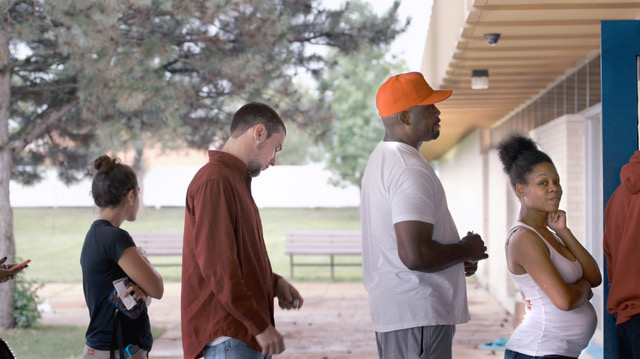Director: Brett Story,
Watched on: iTunes,
Rating: 5/5.
For a film composed of luminous images and becalmed scenes of waiting, watching, and talking, The Prison in Twelve Landscapes will likely leave you outraged. It will be a quiet outrage, in keeping with the mesmerizing resignation and stillness of the people and places featured in the film, but the anger will be there nevertheless, on a constant low boil.
Director Brett Story’s accomplishment here is in taking an unwieldy documentary trope–the survey film, in which situational vignettes and character-driven profiles follow one another without resolve or dramatic mini-climaxes–and turning it into a powerful mosaic of injustice and sorrow. She traveled around the country investigating the ways in which America’s prison industrial complex has become insinuated into the lives, communities, and businesses that exist nowhere near an actual prison. We see only one, Attica, whose sun-sparkled, castle-like exterior and manicured greenery makes it look like an inviting destination resort. We don’t need to go inside to see actual inmates. The victims of America’s mass incarceration obsession as well as those institutions feeding off their neverending “debt to society” walk among us.
There is the black man who gigs away in Washington Square park teaching kids how to play chess. He learned the game in the slammer. There is the incarcerated black female wildfire fighter who takes pride in her dangerous work, but acknowledges she will probably never get hired for a similar job when she gets out. There is the black woman arrested and forced to choose between a week in jail or hundreds of dollars in fines for not chaining a garbage can lid to the can. There is the long line of mostly black people waiting to pay parking tickets or late charges in a city making millions a year off these fines. It’s well-documented that the “prison” in these twelve landscapes would be nowhere without African-Americans to surveil, arrest, fine, jail, and then release back into a world where their rights, their dignity, their entire future becomes transactionally biased against them.
There is more. The Kentucky town that lost its coal mine but is hoping a new prison and its jobs will save them; the ex-con who started a business supplying prison-approved food and clothing to inmates, paid for by their families; the jolly tour guide of Quicken Loans’ sprawling corporate headquarters in downtown Detroit, where it employs a large number of minorities in its pursuit of cut-rate mortgages targeted at low income earners.
The succession of these scenes, sparse in abject information but saturated with a pall of unease, builds to an overpowering sense of futility, of an oppressive Goliath-like system that could easily flick away a David thinking of bringing it down. Halfway through, the film cuts to archival footage of the Detroit riots in 1967, suggesting that federal and local government decided there and then to brand legitimate black protest as illegal, giving carte blanche to law enforcement to punish without oversight, resulting in a legacy of discrimination and profiling now baked permanently into the U.S. power and judicial structure. The outwardly racist regime currently running things in Washington offers no hope for positive change.
The Prison in Twelve Landscapes is a beautifully made film about ugliness. It asks us to take a look beneath its placid, inviting surfaces–the surfaces society buffs into acceptability–and see the chronic rot below.

